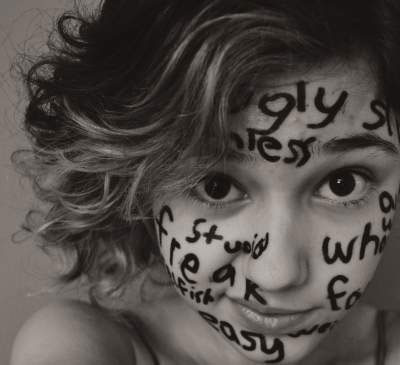All Nonfiction
- Bullying
- Books
- Academic
- Author Interviews
- Celebrity interviews
- College Articles
- College Essays
- Educator of the Year
- Heroes
- Interviews
- Memoir
- Personal Experience
- Sports
- Travel & Culture
All Opinions
- Bullying
- Current Events / Politics
- Discrimination
- Drugs / Alcohol / Smoking
- Entertainment / Celebrities
- Environment
- Love / Relationships
- Movies / Music / TV
- Pop Culture / Trends
- School / College
- Social Issues / Civics
- Spirituality / Religion
- Sports / Hobbies
All Hot Topics
- Bullying
- Community Service
- Environment
- Health
- Letters to the Editor
- Pride & Prejudice
- What Matters
- Back
Summer Guide
- Program Links
- Program Reviews
- Back
College Guide
- College Links
- College Reviews
- College Essays
- College Articles
- Back
Why the Media Should Stop With the “Perfect Body” Ideal
As of 2003, 1% to 5% of girls age 15 to 19 have bulimia nervosa, and anorexia nervosa has a prevalence rate of 0.48%. To put this into perspective, if you have class sizes of 25 students, after 4 classes you will have seen 5 students with an eating disorder. This number has spiked after the internet and media became readily available, meaning media likely plays a large role in adolescents’ view of their bodies. As a teenager myself, I believe that the media should stop pressuring us into having the stereotypical “perfect body” and accept all of our body types in an attempt to stop the outspread of eating disorders. There are several media platforms widely used by people our age that could use improvement in body size diversity.
Western television, usually including Europe, Australasia, and the Americas, is one example of media that can be harmful to us. The actors and characters who are considered pretty are often very skinny, leading us to think that we must be skinny to be beautiful. One example of this was a survey taken on the Fiji Islands, where, prior to 1995, they did not have western television. An article published on Verywell Mind described how their culture valued curvy bodies, with dieting being discouraged. When a survey of teenage girls was taken, virtually none of them reported insecurities about their bodies; however, after three years of exposure to western television, 74% reported having body insecurities, 69% reported dieting, and 11.3% reported vomiting in an attempt to lose weight. The results of the survey suggest that the major increase in unhealthy dieting methods may be linked to the introduction of western television on the foreign island. If only three years of exposure caused such a drastic shift in culture for these islands, there is no telling how far the continuous exposure will affect other kids our age that have grown up in a world centered on western television.
Pro-eating disorder websites are another source of media that encourage dangerous methods of weight loss. These easily accessible websites contain self-deprecating messages and dangerous dieting challenges, and encourage us to try them by using the term “thinspiration”. A pro-anorexia blog written by Theskinnymeforever shared a challenge they were partaking in and encouraged others to join. “This challenge is very simple: 10 days to lose 5 lb! Every day, you keep a score of your day, out of a maximum of 80 points. You are aiming for 800 points in 10 days to lose you 5 lb. It’s only 10 days, right? Don’t mess up. You don’t want to be fat for ever, right?” The scoring encourages excessive amounts of exercise and water, with a very small calorie intake. If someone our age has body insecurities and finds this website, they might begin to agree with the author. If they continue to look, they could find these quick-weight loss diets and be compelled to try one. The very effective diets could encourage them to continue with them and lose an unhealthy amount of weight, possibly leading to a long term eating disorder.
Fashion magazines are another main source of media that can have a negative impact on both our views of our bodies and the health of working models. Magazines often feature thin, underweight models, which could cause increasing insecurities in those our age and encourage dangerous lifestyles for the models. For example, and article published by The Model Alliance described how,“In another prospective study, this same group found that both boys and girls (aged 9 to 14 years old) who were making an effort to look like the figures in the media, were more likely than their peers to develop weight concerns and become constant dieters”. The underweight models often seen on the front pages might make a teen wonder if they were overweight, or if they should be that skinny, and how to do so. Furthermore, the demanding work environment of a model pressures them to eat less and exercise more to have a very small body. Dr. Bryn Austin from the Harvard Chan School of Public Health pointed these unfair conditions out in an interview with The Model Alliance by saying, “In what other occupation in the U.S. would we allow employers to compel children to starve themselves as a condition of employment?” The strain placed on models along with the insecurities fashion magazines can cause in teens make for a vicious cycle of unhealthy eating practices.
The media can have a harmful influence on our views of ourselves and our body weight. Different types of media such as television, websites, and magazines feature or praise skinny, underweight girls. Constantly seeing these photos and messages could cause self-doubt and insecurities in us. Therefore, the media should decrease their pressure to have the “perfect body” and be understanding of all body types to decrease the number of eating disorders.

Similar Articles
JOIN THE DISCUSSION
This article has 0 comments.
